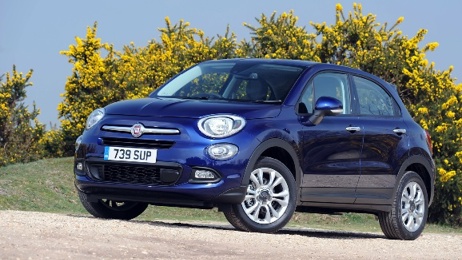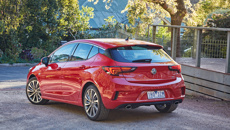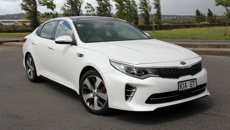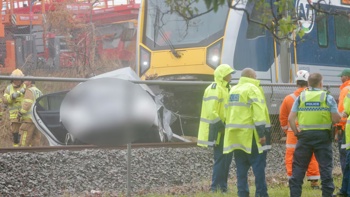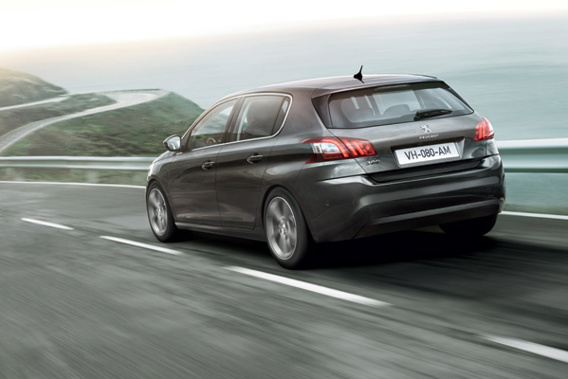
Peugeot has re-discovered its touch and is again producing cars with that special flair and style that has been the cornerstone of the company and its reputation for decades.
It was the mini size 208 that triggered this renaissance a couple of years ago and it’s being continued with the recently launched mid size 308. Like the 208, this is another genuinely desirable addition to the company ranks. Peugeot were confident this 308 had what it takes to put them emphatically back on the sales map and so far so good.
Following its debut at the Frankfurt Motor Show in 2013, this latest 308 has scooping up awards all over the place. One especially that will take pride of place in place in the company trophy cabinet is the prestigious 2014 European Car of the Year. You can have the 308 in three trim levels for our market: Access, Active and the flagship Allure. The Hatch can be had in petrol or turbo diesel forms in contrast to the Station Wagon that’s a petrol only affair.
This car is bigger in every direction compared to its predecessor. To their credit Peugeot haven’t tried to over complicate things. You don’t have to scratch far below the surface to discovers lots of examples of smart thinking, among them seats that are easily folded with a single action from inside the boot to reveal an almost perfectly flat floor area.
The price is right across the entire seven model range starting at $31,990 for the entry level 1.2 turbo six-speed manual hatch and just creeping past $40,000 for the flagship Allure wagon. The two models, a five-door hatch and a wagon were provided for this road rest. The hatch was a mid spec Active variant fitted with a remarkable 96kw three-cylinder 1.2 litre turbo charged petrol, while the wagon was a top of the range $40,990 Allure 110kw 1.6 four-cylinder turbo petrol auto.
Of the two engines on show, it was the diminutive 1.2 unit that proved the real show stopper doing everything with verve and purpose, all to the sound track of its distinctive yet rhythmic three-cylinder beat. The amount of low speed pulling power for a motor of this size is extraordinary, with the car able to power away effortlessly with as a little as 2000rpm showing on the rev counter.
The typography our roads have to traverse provides a seriously rigorous examination of a motor credentials and those that aren’t up to scratch are ruthlessly exposed. Both engines regularly surfed the wave of low speed torque they produced to stay on the front foot on long up hills climbs, ensuring these never become a grind.
While the 1.6 litre engine offers on paper at least, worthwhile gains in power and torque over its smaller sibling, in every day driving in town and out on the open road, just the width of tissue separates them in terms of responsiveness and smoothness. The only time when the larger engine gained some ascendency was through its ability to maintain a stronger and more consistent pace on long inclines, with a full muster of passengers and luggage aboard.
Some of the kudos for the engines boundless energy must go to the modern six-speed automatic with manual gear shifting mode. Whether the driver needs an instant pulse of pace for overtaking or simply wants to amble along at open road speeds this transmission has it covered. Like its predecessor though the transmissions computer tries to align its gear changes to your driving style, but doesn’t do it that well. Another annoying form of electronic meddling, involved hanging on in a lower gear for what seemed at times an eternity, when driving down hill, presumably to provide some form of engine braking. Instead all it did was to threaten to rev the rocker cover off the engine and create an almighty under bonnet din.
If you have decent sized loads to cart on a regular basis then spend the extra on the wagon that boasts one of the best cargo compartments going in the small wagon class. Rear legroom in both cars was on the tight side for long limbed rear seat occupants, and they aren’t that well catered for when it comes to headroom either.
You get in good measure most of the luxury trappings of motoring life. Both cars are fitted with alloy wheels, automatic dual zone air con, and rear parking sensors but not a camera. Unlike the Koreans and Japanese, European carmakers with their lower price point models, have been slower to adopt this valuable bit of safety kit. From some angle, probably a few to many really, the old 308 looked a bit of an ugly duckling. While this new one is know swan, it’s certainly easier on the eye, especially the wagon with its clean-cut contemporary lines. Peugeot used the Volkswagen Golf as a benchmark model for the 308 when it was being developed and some of the influence apparent in the styling.
With its wide track, chunky tyres and agile suspension, the 308 offers resolute grip and road holding that inspire a confidence the previous model never engendered. Being lighter, this model feels almost Ninja like with the speed with which it reacts to unexpected deviations in the road surface, or where the driver for whatever reason, is forced to make a sudden change in direction. Ride quality sees a return to the cosseted and comfy levels of the past and is to the fore over the full spectrum of road surfaces, from the bitter and twisted to the smooth and soothed.
What’s the verdict? Far superior in all departments to its predecessor and one of the best cars we have seen from Peugeot in a long time, but worth the wait.
Take your Radio, Podcasts and Music with you



